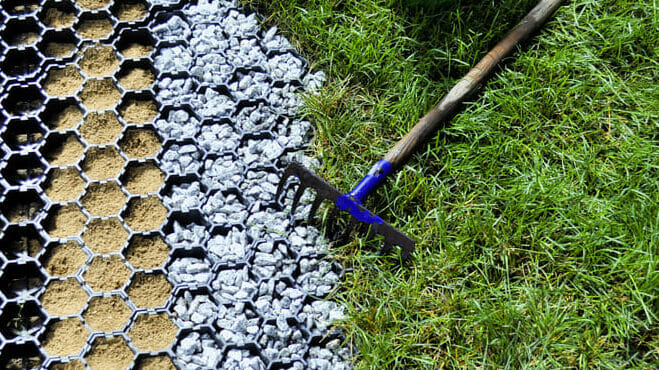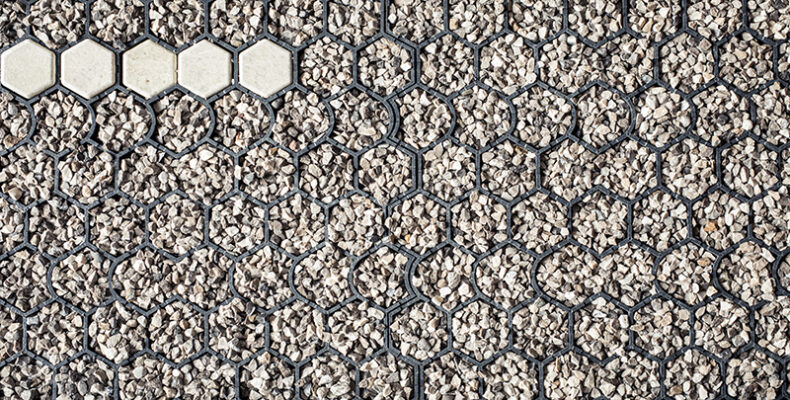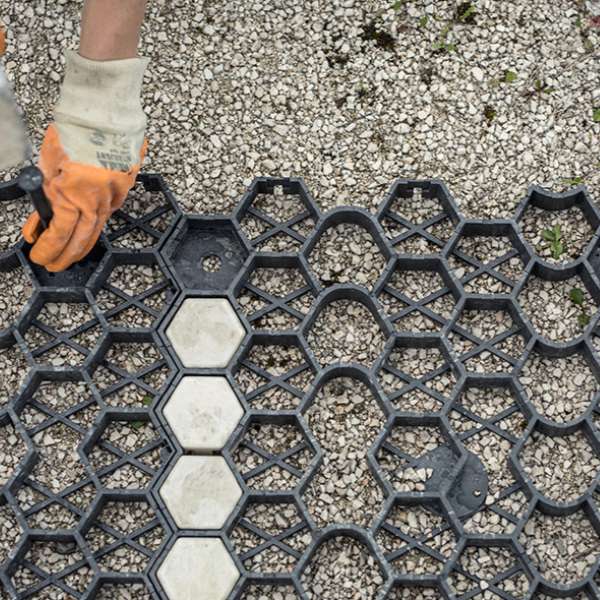How to create a driveway lawn
The reasons that can push you to make land suitable for vehicles they can be the most disparate. A private individual, for example, may want to transform a small portion of the home garden into a car park; a local administration, however, may want to create a car park - or a stretch of cycle path within an urban park - that does not have an excessive environmental impact. Whatever the reason, there are many solutions that can be adopted.
Among these, however, the one capable of guaranteeing the best quality/price ratio is undoubtedly that of lawn protection grill. Easy to install on any surface, the grid (both the plastic one and the concrete one) allows you to create draining driveway pavements solid and capable of resisting even the passage of heavy vehicles.
Ma how to make a driveway lawn and what are the works necessary so that our turf can be transformed into a solid and driveable pavement without resorting to compounds such as cement or stabilized earth? Just three steps are enough, achievable in a handful of working days. Let's discover them together.

Step 1: Create the fund
Before laying the lawn guard and sowing the turf it is necessary prepare the soil properly. The structure, in fact, must rest on a surface that is as flat, homogeneous and free of roughness as possible. Furthermore, the base must guarantee correct permeability: when creating the driveway lawn, it is therefore not recommended to use clays and other materials which could lead to the creation of dangerous water stagnation.
The first step to take, therefore, will be to free the ground from the vegetation already present and eliminate holes and irregularities with sand. Once the surface is leveled, it will be necessary create a gravel foundation about 5 centimeters tall. This layer will guarantee a high level of permeability, ensuring that rainwater is correctly absorbed by the ground.
Once the layer of crushed stone has been levelled, you can move on to installing the grids. Plastic solutions like Garden Grid by Terra Solida Italia they allow you to easily create a honeycomb texture thanks to the innovative click interlocking system. In this way it will be possible to create the load-bearing structure in just a few hours of work.

Step 2: Laying the soil
Once the supporting structure is in place, it will be possible to move on to the next step: the laying the soil. Although it is possible to opt to reuse the soil already present, it is advisable to use a mixture of soil that promotes the growth of the turf, immediately providing all the nutrients necessary to strengthen the roots.
Even though it might seem like a secondary operation, the choice of soil is of fundamental importance for the correct sealing of the entire structure. In addition to having to be compacted inside the cells of the lawn protection grid, the soil chosen must ensure that the roots of the turf grow strong and quickly.
For the correct laying of the soil it is advisable to use ad hoc tools, which allow the cells of the grid to be filled and the subsequent compaction of the soil.

Step 3: Plant the grass
Now that the soil is ready we can move on to the final phase: sowing the grass. Fundamental, in this case, choose the most suitable seed to the situation you find yourself in. In fact, getting the type of grass you are about to plant wrong could compromise the stability of the structure and make the driveway pavement less solid.
To these passages a fourth concerning one should be added the maintenance. Like any turf, even the one that is sown in the lawn protection grid needs to be watered constantly, while the grass must be cut regularly. In this way you will also be able to strengthen the roots and further consolidate the soil beneath the grid.
Where to use the lawn guard
Now that we have seen how to create a driveway lawn in the home garden or how to transform uncultivated land into a large car park with a very low environmental impact, let's try to understand where the lawn guard can be used.
As mentioned several times, together with stabilized earth, the lawn guard - in plastic or concrete - is the ideal solution for creating a small car park in the home garden or for transforming a large area into a public car park. Without having to give up the green of the grass. The grid, however, can also find application in other fields. For example, for reinforce a pedestrian path in a protected area, promoting the normal growth of the turf and, at the same time, ensuring a high degree of permeability.
A feature that makes lawn guards like Garden Grid by Terra Solida Italia perfect for use in playgrounds, archaeological sites, sports facilities and for cemetery roads.

Pingback: Flooring for outdoor parking in the garden: which material to use